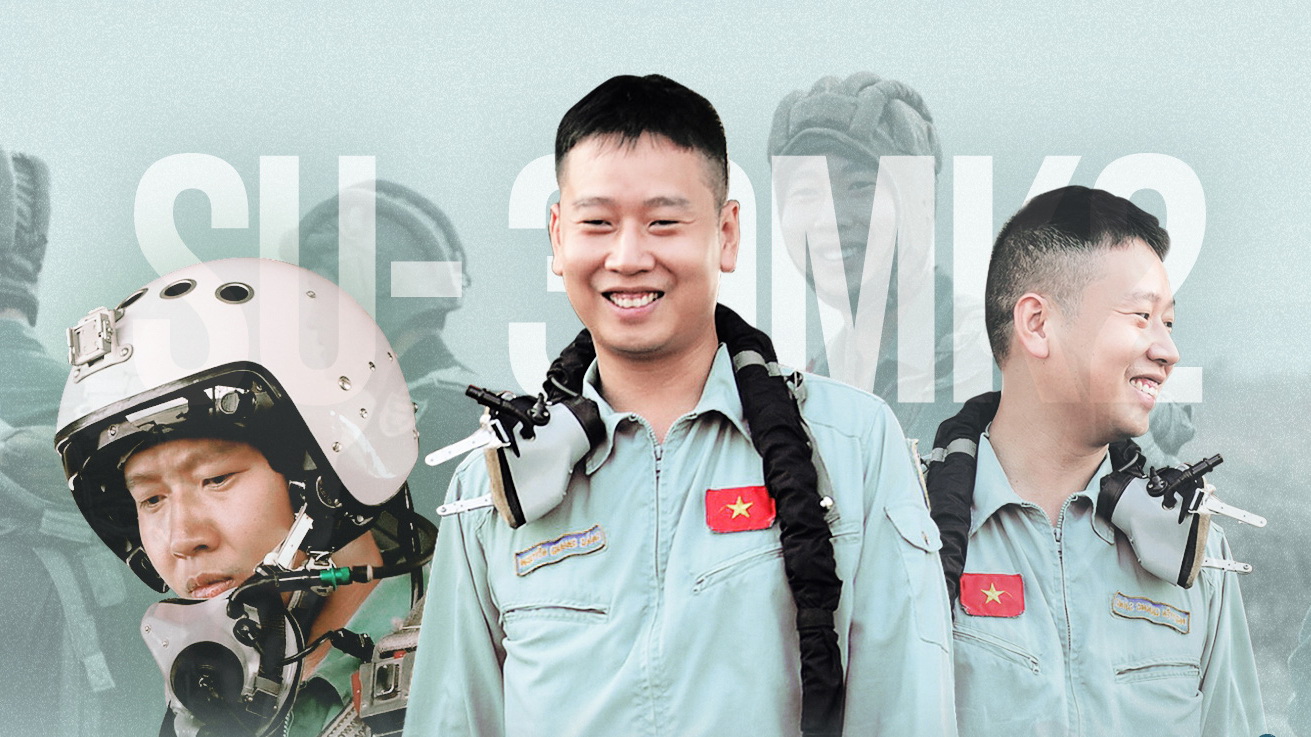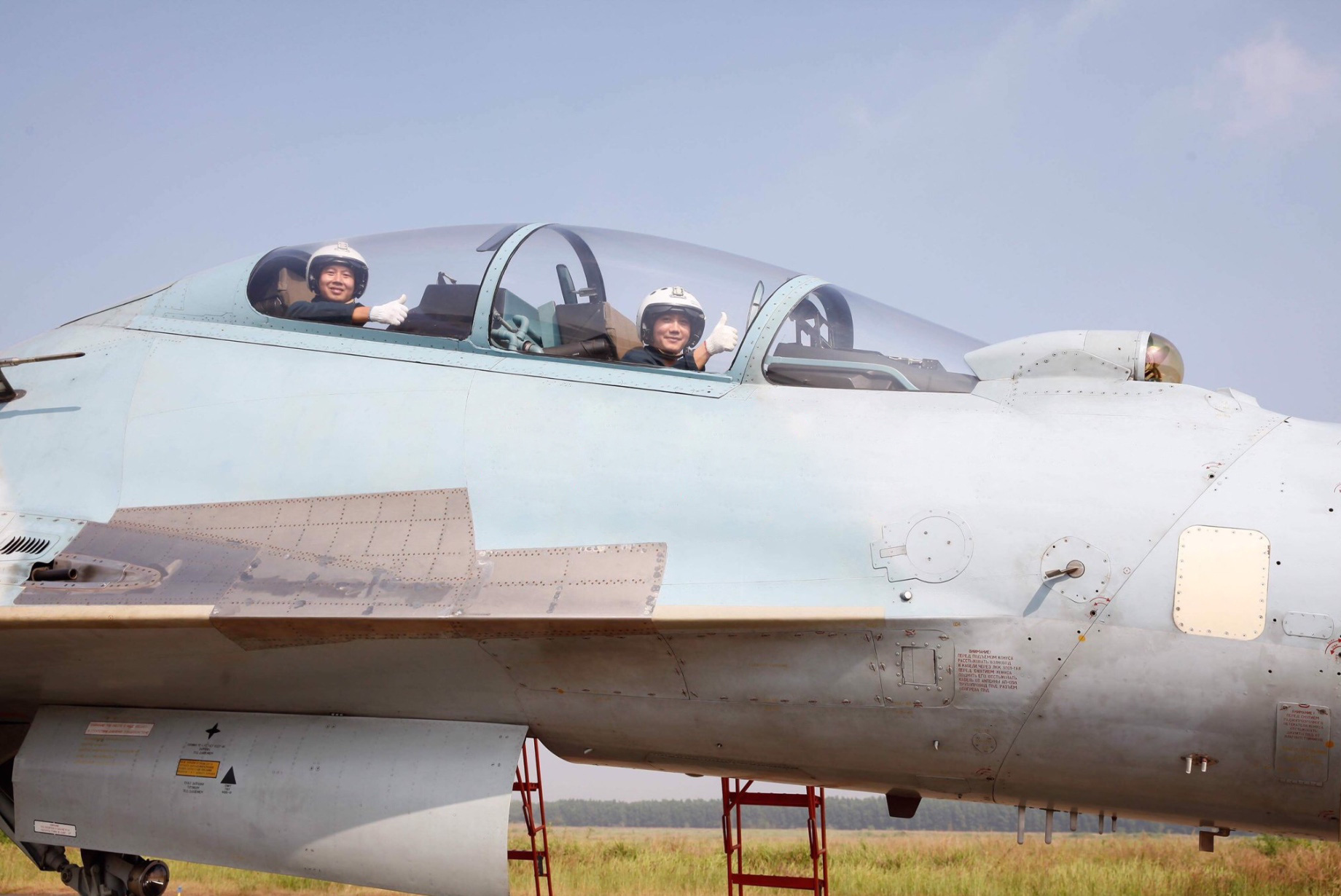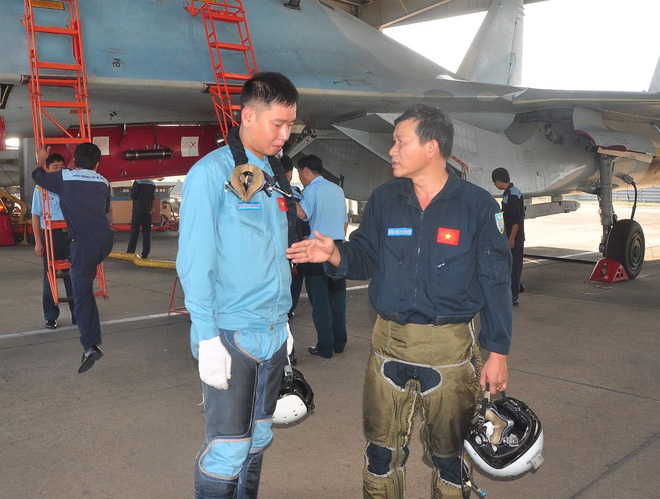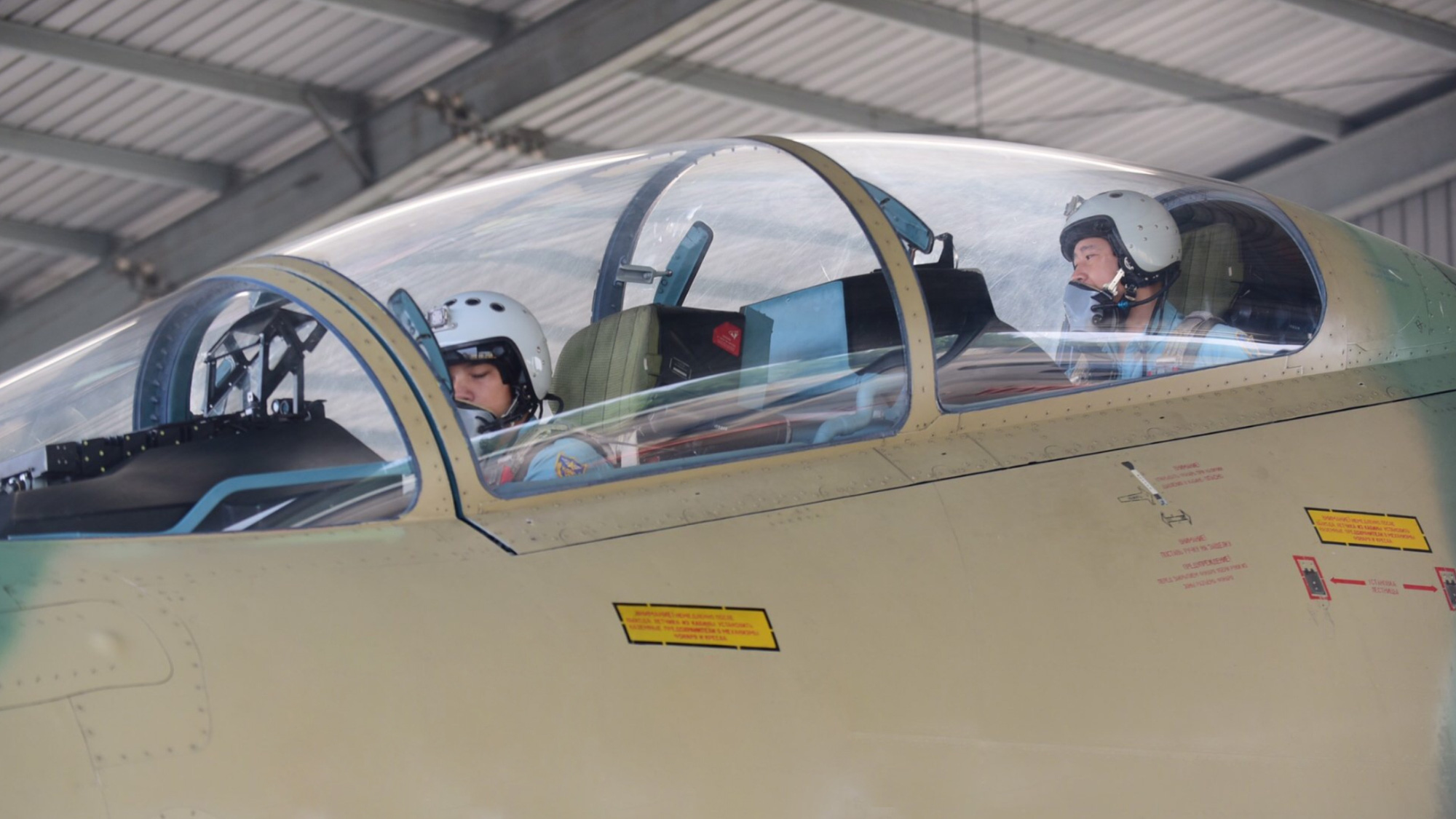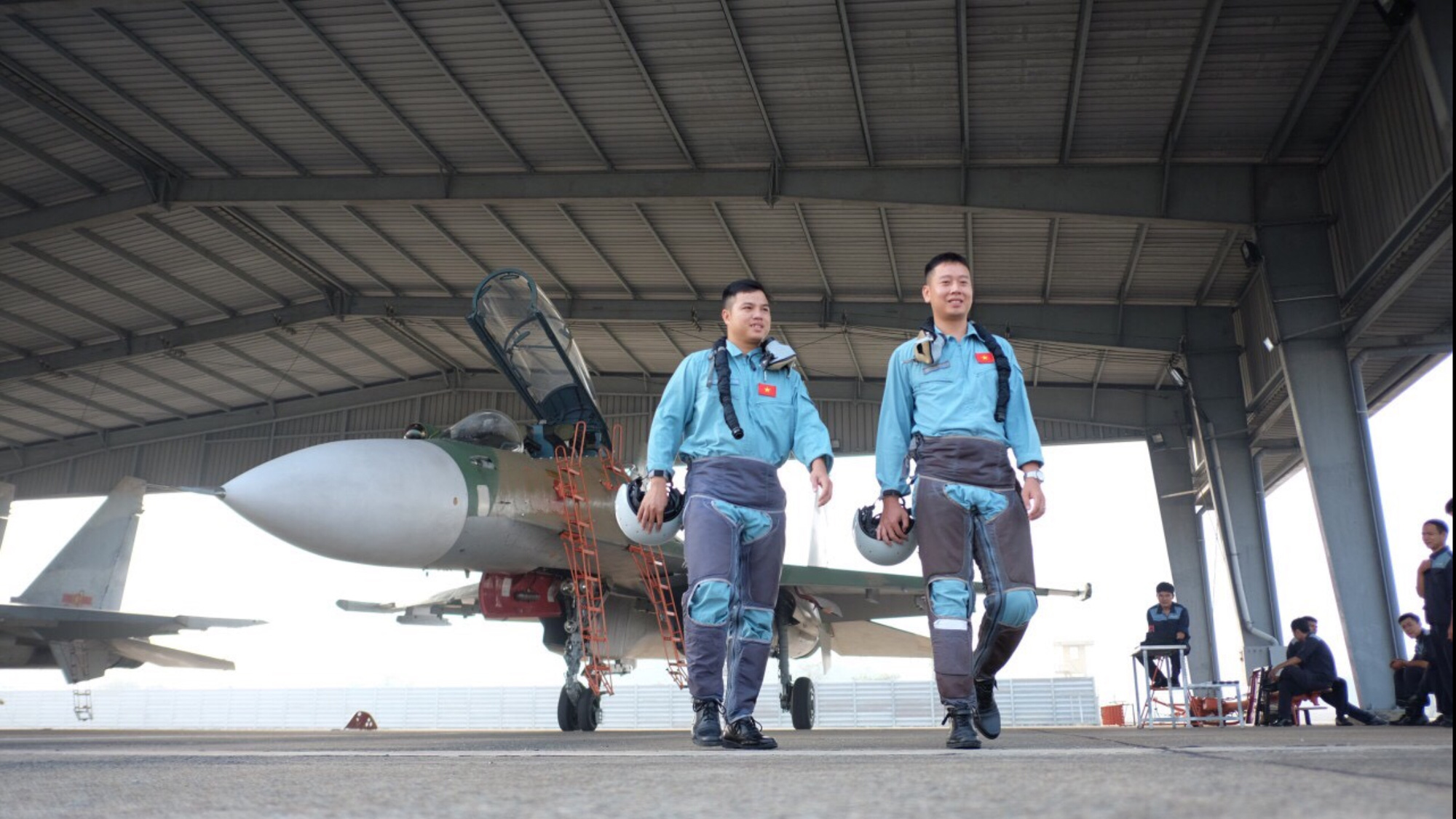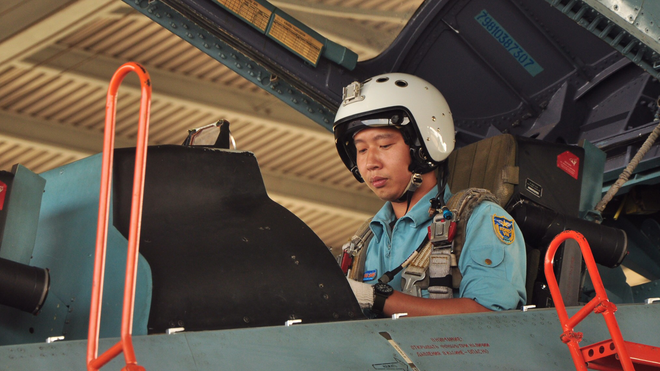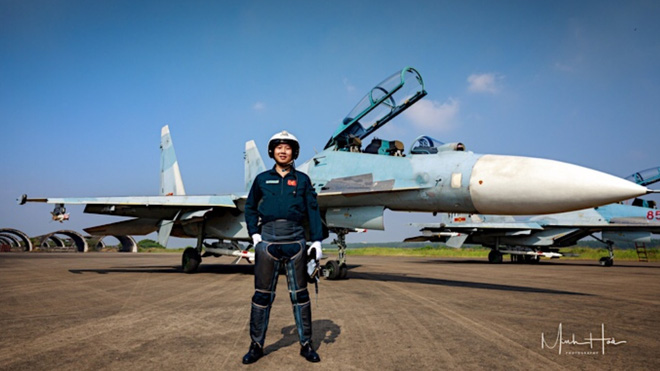As a little boy, Nguyen Quang Sang had dreamed of devoting his life to his country. Now at the age of 31, he is one of the youngest pilots in Vietnam’s first air regiment to master the Su-30MK2, the country’s most advanced combat aircraft.
After graduating from Vietnam’s Air Force Officer Training School in December 2012 with the rank of lieutenant, Sang became one of the first six pilots from Regiment 935 to undergo a trial training in the Air Force.
Previously, fresh graduates were trained on older fighter jets, such as the Mig-21 or Su-22, before earning the privilege of flying the Su-30MK2.
Being accepted into the trial training means skipping over those two planes and making the jump from an L-39 – a 50-year-old model of fighter jet – straight to the Su-30MK2.
The jump between the two aircraft is much trickier than it sounds.
Not only is the Su-30MK2 – a Russian-made aircraft – the most modern fighter jet in the Vietnamese fleet with completely new features and complex systems but the on-screen displays and vocal instructions are entirely in Russian, creating both technical and language barriers for Vietnamese pilots to overcome.
Though Vietnamese pilots are often taught basic Russian in military aviation school, their elementary language skills are typically no match for the technical jargon needed to fly a high-grade military aircraft.
“Inside a fighter jet, every decision must be made for a split second. There is no time for translation. We have to understand what the machine says immediately. The only way is to improve our language proficiency by ourselves,” Sang said.
|
|
| Vietnamese fighter jet pilot Nguyen Quang Sang (left) prepares to fly a Su-30MK2 aircraft in this provided photo. |
Entrusted by Regiment 935, Sang and five other young pilots put all effort and did their best to graduate from the ground training course in order to kick off the flight training.
As a combat squadron, Sang and the other five young pilots from Regiment 935 were expected to master control of the aircraft in minimal time due to constraints put on the training program.
There was no time for repeated practice or making mistakes in understanding the hundreds of buttons on the aircraft. The smallest error could have led to an entire system failure.
“We faced a lot of pressure. But that pressure became our motivation,” Sang said.
According to Sang, his daily routine began at 4:00 am with flight practice and ended with several hours of studying aircraft manuals before bed at midnight.
The next morning, he would ask his instructors questions about the readings he had done the night before, then he would once again begin flight practice. No time was given for entertainment, romance, or even a day off.
Eventually, Sang and his cohorts passed their exams and were entrusted to begin training missions.
|
|
| Vietnamese fighter jet pilot Nguyen Quang Sang (left) and his instructor are seen in this provided photo. |
In March 2016, he was one of the youngest pilots to participate in a live-fire drill organized by Division 370.
At the end of 2016, it was Sang who was asked to accompany a high-ranking delegation from the Ministry of National Defense to Vietnam’s Truong Sa (Spratly) archipelago to present gifts to soldiers and people on the islands in honor of the Lunar New Year.
“It was my first time being a flight captain. I was accompanied and instructed by Le Van Hoi, who was the Deputy Commissioner of Regiment 935. I still remember when we lowered our altitude to just 300 meters above the islands, I could see people waving at us. It was such a moving feeling,” he told Tuoi Tre (Youth) newspaper.
|
|
| Vietnamese fighter jet pilot Nguyen Quang Sang (right) prepares to fly a Su-30MK2 aircraft in this provided photo. |
Sang was promoted to vice-leader of his air squadron in late 2018 at the age of 29. From 2017 to 2019, he was rewarded for his outstanding performance by Division 370.
The pilot claims he owes his success to the experienced teachers in the regiment and he inherited his passion for flight from his instructors and senior officers.
Now as a senior pilot in charge of training fresh graduates, Sang hopes to pass on his own knowledge to new pilots.
As a young leader, Sang is not only trusted by his seniors for his outstanding performance, enthusiasm and a great sense of responsibility but also loved by his teammates for being humble and easy-going.
“The more challenging the task becomes, the more intrigued I am,” Sang said before describing his most favorite flying task -- a finger-four formation that requires the team leader to calculate exactly where each of the three other aircraft in his squadron are.
|
|
| Vietnamese fighter jet pilot Nguyen Quang Sang (right) and a colleague are seen in this provided photos. |
Safety is also a topic constantly in Sang’s mind.
“To ensure safety, we have to learn and accumulate knowledge on the ground. The pilots have to stay healthy, be brave, and uphold their spirits,” he said.
Nguyen Quang Sang has just finished level-one training, the highest level for military pilots. If he passes the test, he will be one of the country’s youngest level-one military pilots.
Sang is also under consideration for promotion from captain to major in the next year.
He is so devoted to his service that he is determined to sacrifice his personal life and his own happiness.
When asked by his wife to accompany her during her labor, Sang could not promise he would be there, saying the country may need him at the same time.
“I would rather give up my little happiness for the country than let the whole country suffer for me,” Sang said.
|
|
| Vietnamese fighter jet pilot Nguyen Quang Sang prepares to fly a Su-30MK2 aircraft in this provided photo. |
|
|
| Vietnamese fighter jet pilot Nguyen Quang Sang is seen in this provided photos. |
Like us on Facebook or follow us on Twitter to get the latest news about Vietnam!



